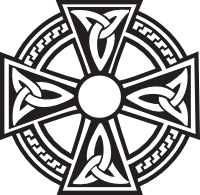Dec. 19, 2023 Newspaper Article, Part 5 of 6

Cranbrook Daily Townsman
Christianity 101 An Orthodox Perspective – The 20th Century
The 1900s saw huge changes. Two world wars, the rise and fall of communism, the invention of automobiles, air transportation, space travel, nuclear bombs, computers – an incomprehensible and ever-increasing rate of technology. The 20th century also gave birth to a myriad of New Age type religions connected with Hinduism, Buddhism, Gnosticism, the Hari Krishna’s, Moonies, Transcendental Meditation, Elizabeth Prophet and Ascended Masters,…
North American religion also saw the birth of an entirely new expression of Christianity, Pentecostalism – the belief that speaking in tongues was the sign of the infilling of the Holy Spirit. It gained momentum at Azuza St. in Los Angeles around 1906 and spawned hundreds of variations and millions of followers throughout the 20th century, morphing into the Charismatic movement and entering the mainstream Protestant and even the Roman Catholic Churches in the 1970’s. Today the majority of the mega churches, the Protestant prophetic movement, various “Christian” prosperity and other styles of television preachers and most other “new move of God” groups can trace their roots to this modern 20th-century movement. None of this has affected the beliefs or practices of the Orthodox Church.
Orthodox monks from Valaam Monastery had come to Alaska in 1794, walking 7400 miles across Siberia. They spread the gospel message throughout Alaska, setting up Churches in the indigenous languages, ordaining Yup’ik, Tlingit, and Aleut clergy and honouring the spirituality they encountered among the Native peoples. Our first North American Orthodox saints were St. Herman of Alaska, St Peter the Aleut, and last month the Yu’pik midwife and healer, Saint Olga of Alaska was added. Even though Alaska was sold to the USA in 1867 and the Protestants moved in to set up missions and residential schools shortly after that, the Indigenous villages remain largely Orthodox.
The 20th century also saw the greatest slaughter of Christians in the history of the Church during the bloody 70-year reign of communism. Conservative estimates are that 120,000 Orthodox monks, 40,000 priests, and 600 bishops were martyred, along with millions of Orthodox Christians.
A few decades before the 1917 Bolshevik revolution, the mass arrival of the Orthodox to Canada and the USA began. These new Eastern Orthodox immigrants from Greece, Ukraine, Russia, Serbia, Lebanon, and the Middle East brought with them their ancient form of original Christianity – Orthodoxy. They were all in communion, sharing the same original Orthodox Christianity no matter what languages they spoke or political regimes they had lived under over the centuries. Eastern Orthodoxy was almost completely unknown in North America, which was already well established by its Protestant and Roman Catholic founders by the time these newcomers arrived. Orthodoxy remains a mystery to most Roman Catholic and Protestant Christians even today.
By the end of the 20th century, unprecedented changes in practice and doctrines were occurring in the mainstream Protestant churches. The new Pentecostal movement was continually coming up with new controversial Christian practices. Huge changes swept through the Roman Catholic Church through Vatican 2 in the 1960’s and the Charismatic movement in the 1970’s. A new liberal humanistic understanding and atheism was sweeping through the North American culture, and many fundamental Christian doctrines and moralities were being questioned, and even ridiculed. This was creating havoc and division in many churches.
During all of this, the Christian deposit of faith of the newly arrived Eastern Orthodox nationalities remained unchanged. The Orthodox newcomers were united in their Orthodox faith and practice. They started out under Bishop Tikhon with English language services in the early 1900’s, but after the Bolshevik revolution in 1917, the diaspora of the various eastern nations sought protection under the bishops of their country of origin, and served only in their mother tongues. This rendered the wisdom and stability of the Orthodox Church quite inaccessible for non-ethnic North Americans. If you came to check out an ethnic Orthodox Church, you may be awed by the beauty of the Liturgy, but wouldn’t understand the language.
Toward the end of the 20th century, this started to change. Leaders from a large evangelical para-church group, Campus Crusade for Christ, and other prominent Protestant leaders, frustrated with the lack of unity and seismic changes in Christian understanding began searching in earnest for what the original Apostolic Church looked like. They began reading the Church fathers from the 1st century and discovered the Orthodox Church was still alive and largely unchanged. The 21st century has seen English language Orthodox Churches springing up everywhere!
Image: Orthodox Ascension Icon, oca.org
